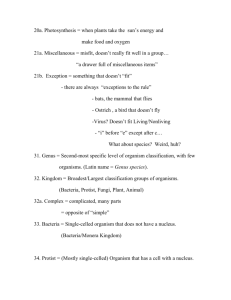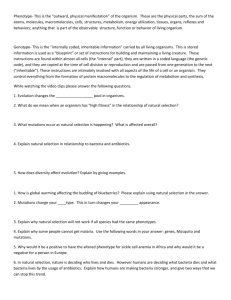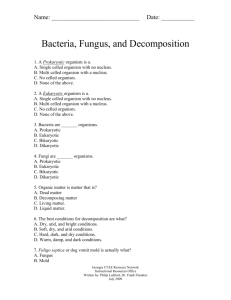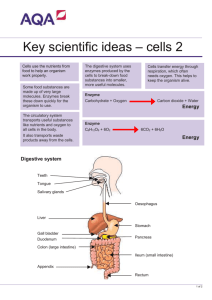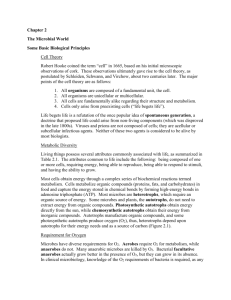Tobacco, Drugs,& Alcohol Vocabulary Matching
advertisement
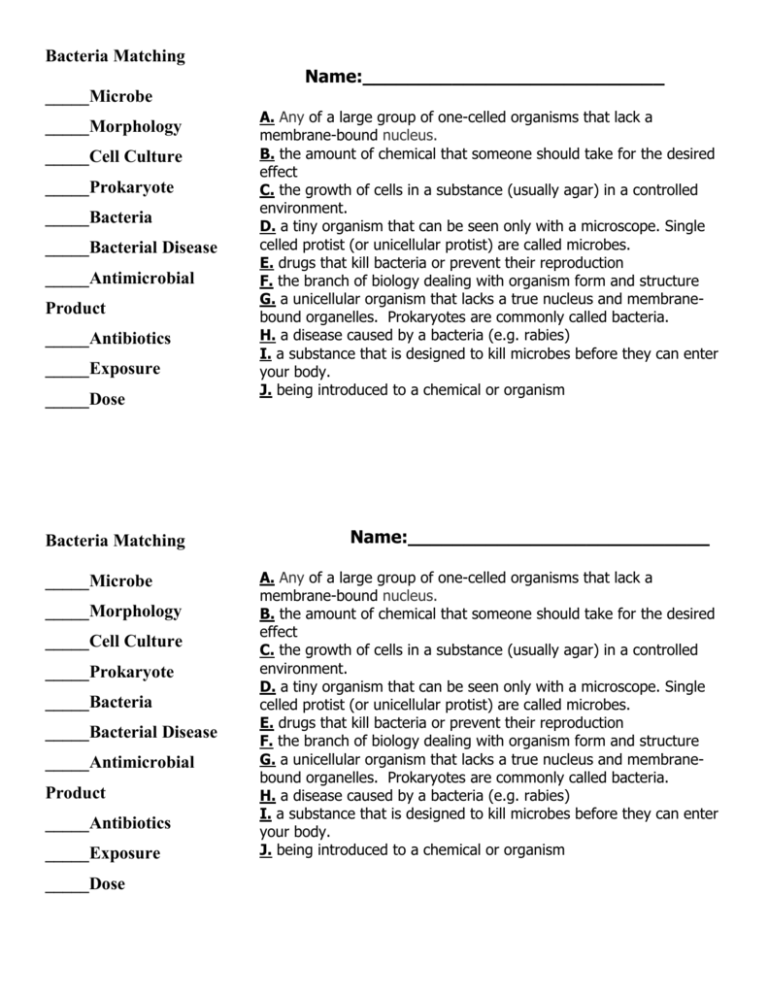
Bacteria Matching Name:___________________________ _____Microbe _____Morphology _____Cell Culture _____Prokaryote _____Bacteria _____Bacterial Disease _____Antimicrobial Product _____Antibiotics _____Exposure _____Dose Bacteria Matching _____Microbe _____Morphology _____Cell Culture _____Prokaryote _____Bacteria _____Bacterial Disease _____Antimicrobial Product _____Antibiotics _____Exposure _____Dose A. Any of a large group of one-celled organisms that lack a membrane-bound nucleus. B. the amount of chemical that someone should take for the desired effect C. the growth of cells in a substance (usually agar) in a controlled environment. D. a tiny organism that can be seen only with a microscope. Single celled protist (or unicellular protist) are called microbes. E. drugs that kill bacteria or prevent their reproduction F. the branch of biology dealing with organism form and structure G. a unicellular organism that lacks a true nucleus and membranebound organelles. Prokaryotes are commonly called bacteria. H. a disease caused by a bacteria (e.g. rabies) I. a substance that is designed to kill microbes before they can enter your body. J. being introduced to a chemical or organism Name:___________________________ A. Any of a large group of one-celled organisms that lack a membrane-bound nucleus. B. the amount of chemical that someone should take for the desired effect C. the growth of cells in a substance (usually agar) in a controlled environment. D. a tiny organism that can be seen only with a microscope. Single celled protist (or unicellular protist) are called microbes. E. drugs that kill bacteria or prevent their reproduction F. the branch of biology dealing with organism form and structure G. a unicellular organism that lacks a true nucleus and membranebound organelles. Prokaryotes are commonly called bacteria. H. a disease caused by a bacteria (e.g. rabies) I. a substance that is designed to kill microbes before they can enter your body. J. being introduced to a chemical or organism

